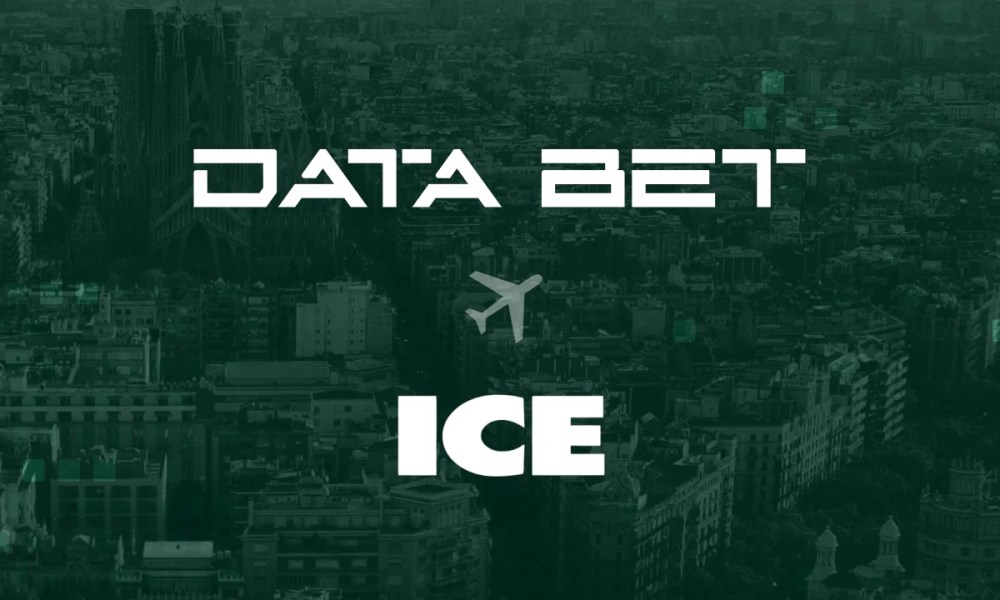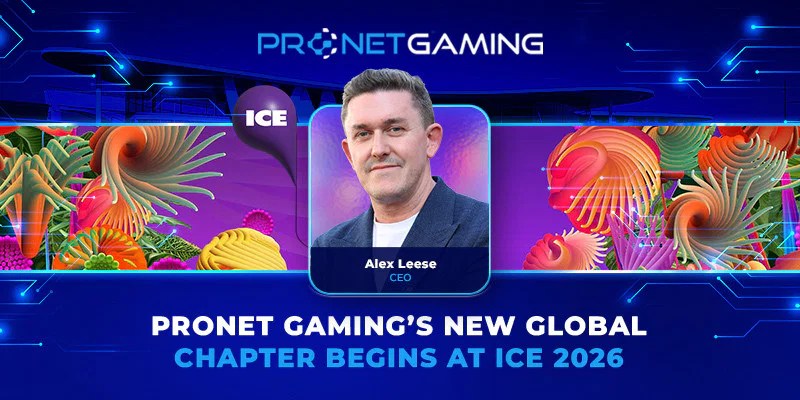Latest News
“Players Who Feel Safe Are More Likely to Stay with A Sole Operator For Longer”
While iGaming brands amass social responsibility fines by the millions allowing unhealthy behavior go unchecked, a better way exists for both operator and player
Responsible Gaming is more than just an industry buzzword or something to look out for. It has real-life consequences for everyone involved: brands, operators and, more importantly – regular people. As the National Council on Problem Gambling marks its Gambling Awareness Month, we stopped to take stock of social responsibility in the iGaming industry – is enough being done? What is holding us back as an industry? And what will the future bring?
The Brands & Regulator
Recent years have seen a crackdown by the regulator on many iGaming fronts, specifically social responsibility or as we know it – Responsible Gaming. In 2021 brands amassed more than £15M in fines for failing to meet social responsibility regulations and protect at-risk players. The trend is gaining momentum, just three months into 2022, operators have already amassed over £15M in social responsibility fines, yes, similar to the entirety of 2021. The total sum of penalties in 2019 covering all violations? A ‘mere’ £17M. Operators need to comply and fast to keep the money on their side of the table.
The people
The human price of operators’ reluctance to comply with social responsibility regulations is clear. There are degrees of unhealthy behavior, but at its worst, a gambling problem can devastate a person’s life, affect their loved ones, mental health, livelihood, and more. The risk shouldn’t be underestimated, regulatory zeal suggests.
“From my study and understanding these pathways, it seems that the need for entertainment and escapism leads certain players. In other cases, they’re driven by more impulsivity issues and a lack of ability to control one’s behavior,” said Sally Gainsbury, Director of the University of Sydney Gambling Treatment & Research Clinic.
“This doesn’t only affect the individual themself, but also 6-10 people around them. That’s why it’s important to prevent harm before they reach this critical level.”
So what’s stopping operators from simply, you know, following Responsible Gaming regulations? “The biggest hurdle is the lack of understanding of the appropriate KPIs and required actions brought down by regulators to work best towards minimizing gambling harm,” said Gainsbury.
If operators limit their most active players, the VIPs of sorts, it’s only reasonable to assume they’ll suffer massive revenue hit, much higher than any fine. But acting on RG makes more financial sense than one might think. “In the modern iGaming world, which includes land-based casinos, sports betting, digital, and all gaming forms, you don’t have to choose between revenue and socially responsible gaming,” said Michael Pollock, Spectrum Gaming Group’s Managing Director.
“The companies that tend to be the most profitable and the market leaders are the ones that take this responsibility seriously for several reasons: One – if you’re irresponsible, you’re leaving your customers dry. You want the customer to afford what they are spending. That’s the heart of responsible Gaming. Two, if you want the public’s trust and to be recognized as one that can be trusted with their money, RG has to be front and center in your business practices. If not, you’re not going to be a market leader. And three, if you don’t take the responsibility seriously, regulators will prevent your brand from renewing your license,” added Pollock.
The solution
Optimove, the leading CRM Marketing platform, has a different approach to Responsible Gaming. It offers a predictive model to identify players-at-risk and recognizes three maturity levels of an operator regarding responsible Gaming:
- Basic – Providing players the ability to self-exclude at any time. This is typically also the most rudimentary requirement of most regulated regions.
- Competitive – Exploring the various attributes that players demonstrate before they self-exclude. By creating a segment of customers who self-excluded, operators can identify suspicious attributes to try and mitigate them and reduce the number of players who become at-risk players.
- Advanced – Implementing a machine learning algorithm that helps operators predict which players are likely to become at-risk ahead of time. Such algorithm also allows operators to differentiate between at-risk and VIP players, who often share a few similar attributes.
VIP or At-Risk?
In the UK there has been a clear move by the main Operators towards a mass market/recreational customer. The average player values dropped accordingly and VIP programs have basically came to an end. This has been driven by the concerns around problem gambling and the big overlap between what was previously described as a VIP and what is now understood to be problem gambling issues.
Many companies still have two separate departments, CRM and RG, but the reality is that the result of this operational setup and the contradictions between definitions of success in each field, means that the different teams are not necessarily driving in the same direction when it comes to player care.
Use outreach to educate
Instead of creating player journeys consisting of only promotional campaigns, operators should begin putting a heavier emphasis on educational and informative content that encourages players to adopt healthier behaviors and reduce the number of players who become at-risk.
Operators must communicate carefully in the competitive gaming market, where 1-to-1 marketing communications is still an integral part of the experience. By segmenting customers into tiers based on their risk levels and adjusting the informative-to-promotional campaign ratio accordingly, operators can maintain the marketing aspect, and improve their revenue, while instilling more robust socially responsible practices.
Metrics to monitor
If traditional CRM marketing focuses on promotional offers to measure incremental Net Gaming Revenue as the main KPI, socially responsible marketing mix needs to measure player migrations from one risk level to another and overall retention rates.
To identify the marketing strategies that work best to maintain a high level of healthy-player engagement, operators should measure their campaigns’ impact on player behavior over time. Similar to A/B/n testing different treatments, entire player-journeys should be tested to evaluate how they affect player behavior and risk-level migrations.
Using different CRM Marketing tools, like Optimove, operators can easily create entire marketing flows and monitor how players migrate from one risk level to another, and adjust their marketing strategies as necessary. Gaining insight into how both campaigns and flows perform can empower operators to optimize their marketing strategy and reduce the number of players who become at risk.
For instance, one gaming operator segmented its customers into tiers based on their low, medium, and high-risk levels. Players with a low-risk level were given the occasional promotional campaign, while players in the medium risk level received 30% of the promotional campaigns, and so forth.
The future
On the predictive side of things, there is a huge amount more that operators can be doing to identify behavioural issues at a much earlier point in the customer journey. Once predictive models – which help identify at-risk players – are in place, operators do not need take a manual binary decision on whether to cut the player off or leave them alone, but can begin taking the customer through a RG journey that may first provide instructive content around the issue. If the behaviour doesn’t change, then limits can be brought in before finally cutting the customer off.
In the near future Responsible Gaming will be integrated into all business sides and will not remain a siloed responsibility of few. That means an organizational overhaul around the issue as every department within an operator or platform must be guided by RG principles. For example, in CRM terms, it means CRM Teams will have:
- A clear understanding of what RG principles need to be followed.
- These principles will be converted to customer attributes that are easily trackable and monitorable.
- Teams will have programs in place to foment healthy gaming behavior.
- Teams will have marketing tools that autonomously redirect customers to those programs when needed (to prevent and amend situations).
Doing this at scale however is challenging which is why AI should be the lead in predicting, identifying and managing at-risk players. Once a player is identified as being at-risk, the AI algorithm will autonomously reassign them to the appropriate segment, where the messages are less salesy, focusing more on adjusting the behavior, understanding the problem better and taking a step back if needed.

Latest News
Arena Racing Company awarded United Arab Emirates Gaming-Related Vendor License
Arena Racing Company (ARC) has been granted a Gaming-Related Vendor license from the United Arab Emirates’ General Commercial Gaming Authority (GCGRA), an independent entity of the UAE Federal Government with exclusive jurisdiction to regulate, license, and supervise all commercial gaming activities.
The license, operational with immediate effect, affords ARC the opportunity to provide its products and services to licensed operators in the region. Notably, the Racing1 Markets service, an all-in-one horse and greyhound racing solution delivered in conjunction with Racing1 alliance media rights partners at 1/ST CONTENT, Racecourse Media Group (RMG), and Tabcorp, alongside technical partner Pythia Sports. ARC has been added to the list of licensed vendors as per the GCGRA website.
Jack Whitaker, Commercial Manager at ARC, said: “Obtaining this license is a great achievement for ARC and its Racing1 partners. The emerging regulated UAE market is incredibly exciting, and we look forward to showcasing our innovative products and services in the region.”
The post Arena Racing Company awarded United Arab Emirates Gaming-Related Vendor License appeared first on Gaming and Gambling Industry Newsroom.
Latest News
Play’n GO games now live with Ivy Casino in the UK
Swedish gaming giant’s industry signals commitment to the UK regulated market by launching it leading portfolio of games with Ivy Casino
Play’n GO, the world’s leading casino entertainment provider, has today announced that its industry leading portfolio of games is now live with Ivy Casino in the UK.
Ivy Casino’s players in the United Kingdom can now access global smash hits from Play’n GO, including Book of Dead, Legacy of Dead, and Rise of Olympus 100 among many others.
Ivy Casino is a UK-facing online casino brand that launched in 2024 with a focus on delivering a premium, player-centric experience tailored specifically for the UK market.
The brand operates alongside two sister sites, Rose Casino and O’Reels, which also serve UK audiences and share the same commitment to high-quality entertainment, strong user experience and robust responsible gaming standards.
Play’n GO has been one of the leading game suppliers in the UK for many years and is steadfast in its commitment to regulated markets globally.
Magnus Olsson, Chief Commercial Officer of Play’n GO, said:
“We are delighted to launch with Ivy Casino in the UK who, like us, are focused on all the key elements of operating within a regulated market framework. I’m sure this is just the beginning of a long and fruitful partnership.”
Mark Good, representing Ivy Casino, said:
“This partnership with Play’n GO forms part of Ivy Casino’s ongoing strategy to enhance its content offering for UK players by collaborating with leading studios known for creative, engaging gameplay.”
Play’n GO is a proud sponsor of the Moneygram Haas Formula 1 team, and recently launched a fashion brand, Play’n GO Shop, to sit alongside its existing Play’n GO Music brand to give fans more ways to connect with Play’n GO.
In October, Play’n GO set a world record by launching everyone’s favourite slot character, Garga, into space reaching a height of over 35,500m as part of the launch campaign for Reactoonz 100 which instantly became one of the biggest game launches of the year for the company.
The post Play’n GO games now live with Ivy Casino in the UK appeared first on Gaming and Gambling Industry Newsroom.
Latest News
Esportes da Sorte strengthens brand presence during New Year’s Eve celebrations across four Brazilian capitals
Esportes da Sorte, one of Brazil’s leading online betting platforms, will be the official sponsor of New Year’s Eve celebrations in four Brazilian capitals: Salvador, Recife, Natal and Maceió. The initiative reinforces the brand’s growing presence in the national cultural calendar and its strategy to connect with large-scale public celebrations beyond the digital environment.
New Year’s Eve is one of Brazil’s most significant annual moments, marked by intense domestic travel, international tourism and mass public participation. By supporting celebrations in four key destinations, Esportes da Sorte aligns its brand with tradition, culture and shared experiences that resonate deeply with local communities.
“Sponsoring New Year’s Eve celebrations in four capitals reflects our commitment to being present in moments that bring people together,” said Marcela Campos, Vice President of the Esportes Gaming Brasil Group, owner of the Esportes da Sorte brand. “Supporting these cities means valuing their cultural identity, strengthening local ecosystems and celebrating the people who keep these traditions alive year after year.”
Across all four capitals, the brand will activate its presence through immersive experiences, public-facing activations and the distribution of branded giveaways — a hallmark of Esportes da Sorte’s engagement strategy at major events. The activations are designed to enhance the festive atmosphere while reinforcing the brand’s connection with culture, entertainment and responsible enjoyment.
The New Year’s Eve sponsorships build on Esportes da Sorte’s broader cultural engagement strategy, which includes long-standing support for large-scale events such as Carnatal, in Rio Grande do Norte — a key fixture in the state’s tourism and cultural calendar. Together, these initiatives reflect the company’s commitment to expanding its footprint in cultural sponsorships nationwide.
Esportes da Sorte’s participation also mirrors a wider trend within Brazil’s regulated betting market, as operators increasingly diversify their sponsorship portfolios beyond football. Music, festivals and cultural celebrations have become strategic platforms for brands seeking broader visibility, deeper community ties and more sustainable engagement with the public.
The post Esportes da Sorte strengthens brand presence during New Year’s Eve celebrations across four Brazilian capitals appeared first on Gaming and Gambling Industry Newsroom.
-

 Latest News1 week ago
Latest News1 week agoSCCG Announces Strategic Partnership with Yellow Elephant Studios to Expand Multi-Channel Gaming Content Worldwide
-
Latest News3 months ago
Announcement: 25th September 2025
-
Latest News1 month ago
JioBLAST Launches All Stars vs India powered by Campa Energy: A New Era of Creator-Driven Esports Entertainment
-
Latest News3 months ago
The Countdown is On: Less Than 3 Months to Go Until The Games of The Future 2025 Kicks Off in Abu Dhabi
-
eSports1 month ago
CS:GO Betting Gains Momentum in the iGaming Sector
-
Latest News2 weeks ago
THE 2025 PUBG MOBILE GLOBAL CHAMPIONSHIP GROUP STAGE WRAPS UP WITH LAST CHANCE IN SIGHT
-
Latest News3 months ago
Evolution launches Sneaky Slots — a Bold New Slot Studio
-
Latest News3 months ago
Leading The Charge! Euronics Group Joins LEC As Official Electronics Retail Partner













You must be logged in to post a comment Login